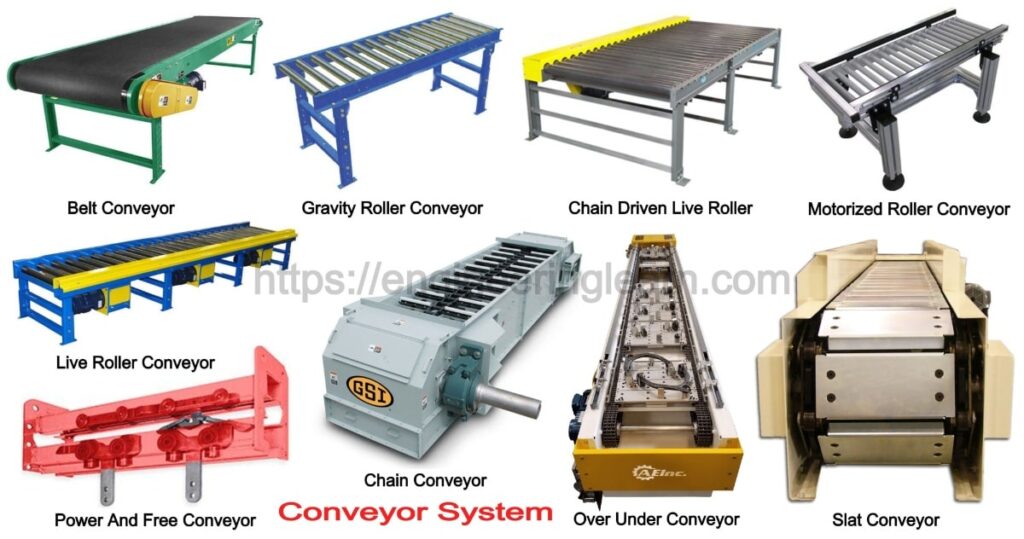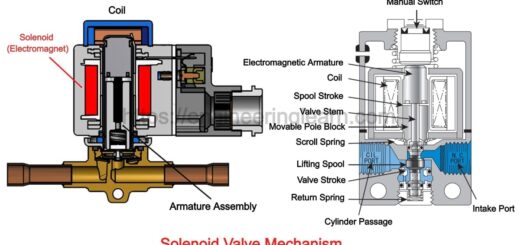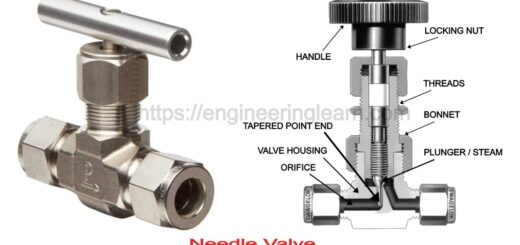Types of Conveyor System: Definition, Application, Working, Uses and Design

What is Conveyor System?
Types of Conveyor System: Definition, Application, Working, Uses and Design :- A conveyor system is referred to as a common piece of mechanical handling equipment which is used to move the materials from one place to another. Conveyors are mostly useful in the application of transportation of the heavy and bulky materials. The conveyor system is the one which allows quick and efficient transport for a wide variety of materials, which is found making them quite popular in the material handling and packaging industries.
The conveyors are found having various different designs and uses. Common types of conveyors are belt, roller, motorized roller and overhead conveyors. These are categorize as floor style which are mounted on the floor and overhead. Uses of such conveyors are mentioned below. Scroll down to know more about conveyors in detail.
Uses of Conveyor
The uses of conveyors are in various industries about which the detail is mentioned below.
- Conveyors systems are used for moving the products from one place to other place.
- Conveyors are used to carry the products which are too heavy and cannot be lifted by the labour.
- These systems can be used in order to move a product while the operators are working on it.
- In huge industries these conveyors are used to avoid injury to workers from repetitive movement or in order to prevent damage from the products which can be caused by the movement.
- The conveyor system is used in order to deliver the products to a robot for processing or in order to receive the products from a robot which are already for the further steps.
- These systems are also used in storage and buffering of resources.
- The conveyor system can also be used to store products between within the processes or at the final step during the processing.
- The conveyor system can be used to create a buffer or accumulation bank which is a flexible storage system and can be used it wherever the quantity of products in storage can be lower or higher as per the requirement to balance the process flow.
- These can be used to either sequence or re-sequence the products within processes. There are system like Power and free systems which can provide this.
- Conveyors are one of the most flexible types of industrial equipment which is mostly installed with an aim to improve the productivity, efficiency and safety in the industry. These are also used in order to transport bulk materials too. For instance, gravel or iron ore.
How to Select Right Type of Conveyor?
Introduction
First of all there should be some basic product information. It is quite helpful in understanding the productive role that the system will be performing. Based on these factors one can select the various types whichever are available and then see which ones can do the job perfectly and provide the best results.
Next thing which can be the constraint is the availability of space in the production environment which can be at a real priority. Although the conveyors can add a lot of productivity, they can also get in the way of other operations, therefore one must carefully check the space which is being occupied as this gives the input for thinking whether to use it at a floor level or in an overhead style.
Floor or Overhead
Conveyors are categorized as floor style or overhead style as this is an important decision point. Overhead styles are referred to as those which can take various different forms which are found to share the benefits that the system itself is mounted on the part on which it is moving. So, they can use a production space which is not at all occupied with all the other equipment. This can be used to enable the overhead plant space in order to become productive, like using it for a buffer or storage bank. In case more space is available, floor style systems may found to be more suitable which include belt conveyors, gravity roller, skate wheel and slat conveyors.
There are some processes which need accurate positioning of the part for instance, robot loading or unloading. The system which is equipped with tooling, pallets or carriers is used to accommodate this. A simple belt or roller conveyor by itself cannot maintain the part in an accurate location. The speed which is required, investment available can drive the choices. Simpler, faster and more affordable systems are found to be great. Whereas other solutions are found to need more sophisticated automated conveyor lines.









